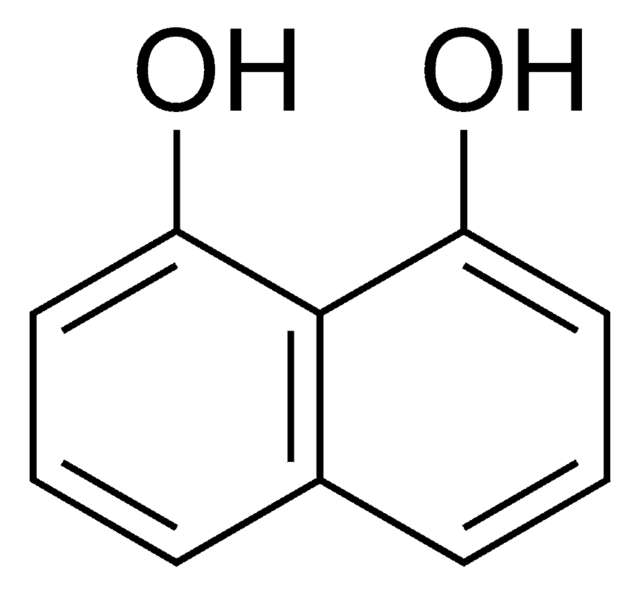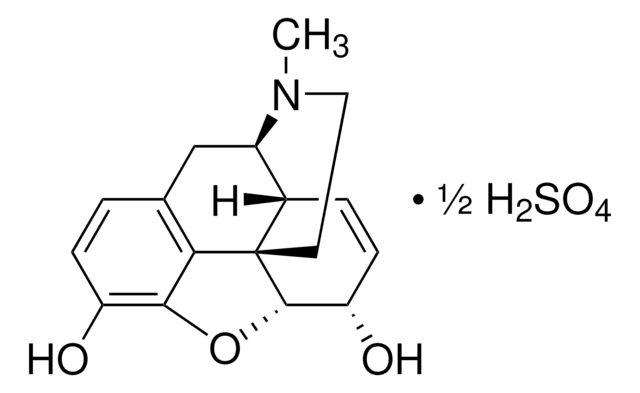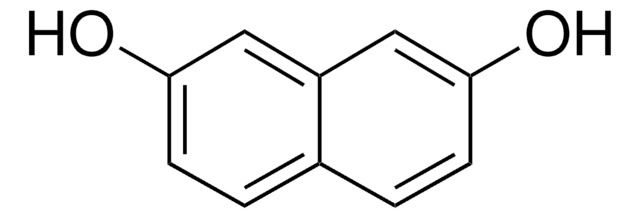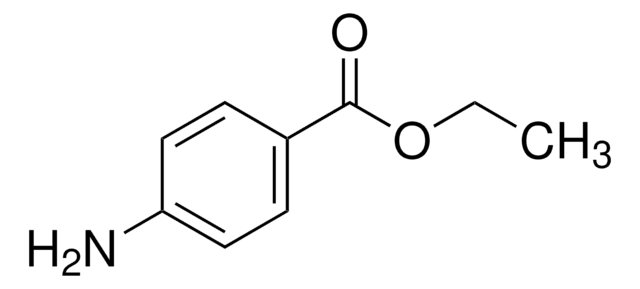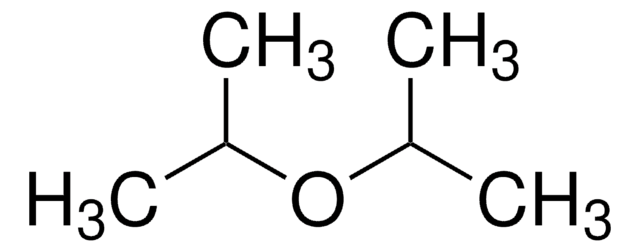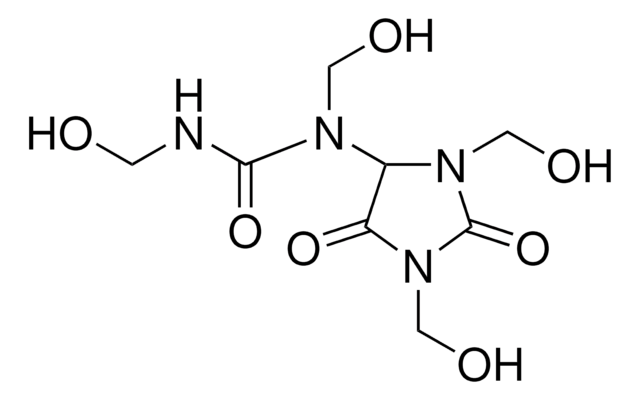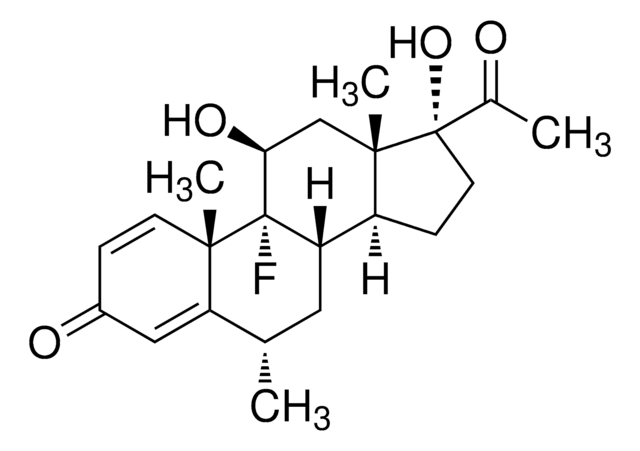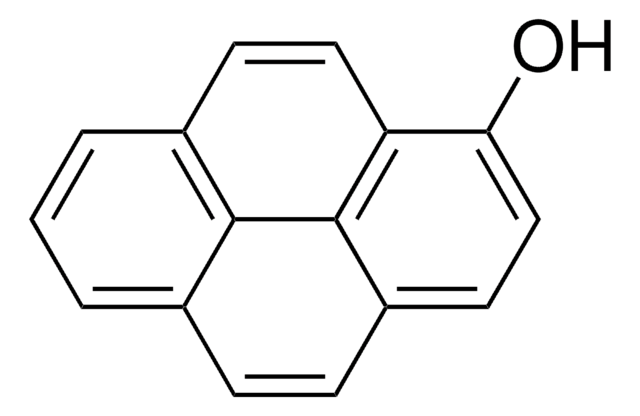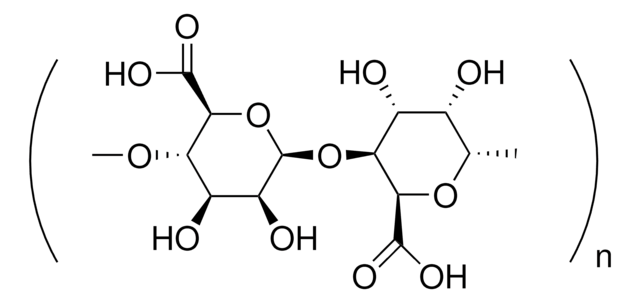N6250
1,3-Dihydroxynaphthalene
≥99% purity , crystalline
Synonym(s):
1,3-Naphthalenediol, Naphthoresorcinol
About This Item
Recommended Products
Product Name
1,3-Dihydroxynaphthalene, ≥99%, crystalline
assay
≥99%
form
crystalline
technique(s)
titration: suitable
color
white to tan
mp
123-125 °C (lit.)
124-125 °C
solubility
ethanol: 50 mg/mL
λmax
288 nm (298 nm (ethanol))
application(s)
diagnostic assay manufacturing
hematology
histology
storage temp.
room temp
SMILES string
Oc1cc(O)c2ccccc2c1
InChI
1S/C10H8O2/c11-8-5-7-3-1-2-4-9(7)10(12)6-8/h1-6,11-12H
InChI key
XOOMNEFVDUTJPP-UHFFFAOYSA-N
Looking for similar products? Visit Product Comparison Guide
General description
Application
Preparation Note
signalword
Warning
hcodes
Hazard Classifications
Muta. 2
Storage Class
11 - Combustible Solids
wgk_germany
WGK 3
flash_point_f
Not applicable
flash_point_c
Not applicable
ppe
dust mask type N95 (US), Eyeshields, Gloves
Choose from one of the most recent versions:
Already Own This Product?
Find documentation for the products that you have recently purchased in the Document Library.
Customers Also Viewed
Our team of scientists has experience in all areas of research including Life Science, Material Science, Chemical Synthesis, Chromatography, Analytical and many others.
Contact Technical Service
